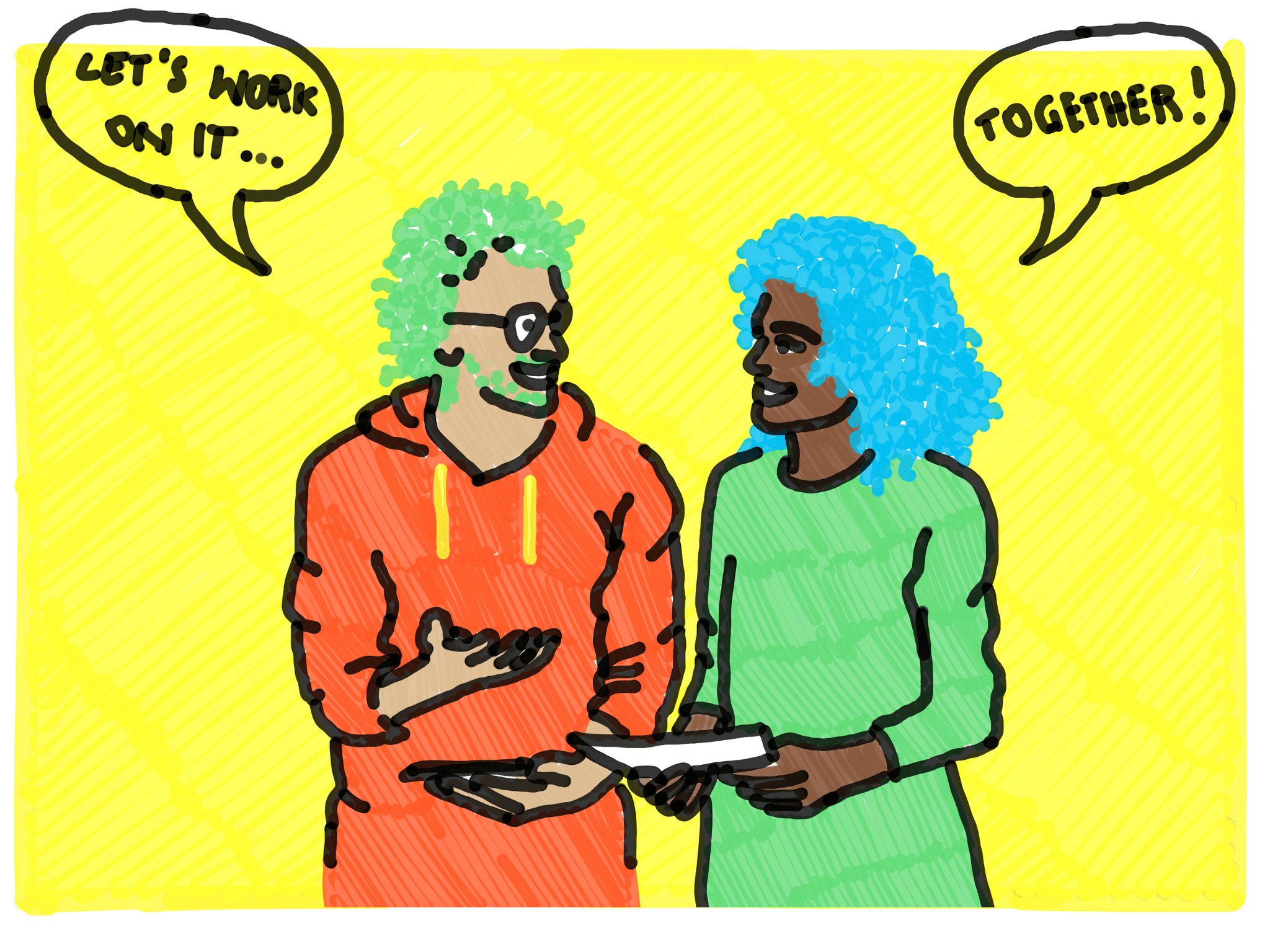Feedback as a compass
Whether at work, in sport or in private life: People want to know how they are doing. And this is where feedback comes into play. It helps you to understand where you stand and what steps you should take next.
Effective feedback is not just “That was good” or “I didn’t like that”. In the world of communication, it’s like a compass – without it you would get lost or always go round in circles.
But remember: Like any tool, feedback is only as good as its application. Use our feedback examples as a guide for even more effective feedback.
Feedback + feedforward = success
For effective feedback, you should combine feedback and feedforward. Feedback provides feedback on what has already happened. On the other hand, Feedforward looks to the future and provides concrete suggestions for action and solutions. If you combine the two, you will help your counterpart to act better in the future instead of just criticizing.
Imagine feedback as a rear-view mirror in a car that shows what’s behind you. Feedforward is the windshield that clears the way ahead of you. You need both to reach your destination safely. We’ll show you the best way to do this here.
The right framework conditions for feedback
In order for your feedback to really reach the other person, the framework conditions must be right first.
- Create a safe environment: You can give appreciative feedback in front of a group. Critical feedback is a different matter. The best way to do this is to have a conversation in private. Nobody wants to be exposed in front of the group.
- Choose the right timing: Give feedback as soon as possible. But: In the case of acute conflicts, you should cool down first. A walk in the fresh air or a few deep breaths help to cool everyone down.
- Focus on what you want to happen: Avoid negations (“I want you to stop looking at your smartphone in meetings!”), but formulate what you want instead (“I want you to only look at your phone again after the meetings!”).
- Describe precisely: Avoid killer words like “always”, “never”, “only”. Use more precise descriptions instead. For example, “the last two times”, “last time” etc.
- Focus on one specific behavior: Even if you want to give feedback on several aspects, refer to one situation.
5 steps for effective feedback
Step 1: Name the situation
Start your feedback session by referring to the situation you want to give feedback on. Use the past tense. This conveys to your counterpart that the old behavior is in the past, but that something new is possible in the future.
Feedback example:
“Last Monday during our jour fixe, I saw …”
Step 2: Describe the behavior you observed precisely
Name the behavior by addressing what you saw with your eyes, heard with your ears and felt with your body. Only describe the behavior you have observed and do not criticize the whole person.
Feedback example:
Wrong: “You weren’t on the ball at all!”
Right: “I saw that you looked at your cell phone a few times during the jour fixe last Monday.”
Step 3: Offer a solution for the future
Now the feedforward becomes important: direct all your attention to the future. Answer the question for yourself: “How can your counterpart do things differently in the future?” Formulate your suggestions like a movie director giving specific instructions to his or her actors. This way, your counterpart really knows what they can do in the future.
Feedback example:
“In the future, please only switch on your cell phone after the jour fixe!”
Or formulated as an idea: “I wonder what it would be like for you if you only switched on your cell phone after the meeting in the future?”
Step 4: Emphasize what the new behavior brings
Your counterpart will find it easier to accept your feedback if it is clear what benefits the new behavior will bring. Think about it: What is possible (for both of you) as a result of the new behavior? Say what your desire for change enables you both to do.
Feedback example:
“It’s important to me that you give us your full attention so that I can take your opinion into account better.”
Step 5: Finish with something positive
Effective feedback should always end with an appreciation of the feedback recipient. Compliments on specific achievements as well as on the person themselves are conceivable.
Feedback example:
“Thank you for listening. I really appreciate your dedication to your work!”
Think about at least one aspect that you value authentically. This icing on the cake at the end works wonders!
What does this mean in practice?
Feedback example #1
Situation: “Do you remember our team meeting on Tuesday?”
Behavior: “I noticed that you interrupted Julia’s proposed ideas several times.”
Suggested solution: “Next time, I’d like you to wait until someone has finished speaking before you jump in.”
Profit: “Not only would it make things run more smoothly, it would also show that you really value the opinions of others.”
Positive conclusion: “I know you always bring a lot of energy and passion to our meetings. That’s great, and I really appreciate your contributions!”
Feedback example #2
Situation: “In the customer meeting on Friday…”
Behavior: “…I noticed that you didn’t quite have a handle on some of the technical details.”
Suggested solution: “Perhaps we could sit down together briefly before such meetings to make sure you have all the necessary information?”
Profit: “That would make us more secure as a team and show our customers that we are really up to date.”
Positive conclusion: “You have a great feel for customer needs, and I really appreciate that. Thank you for your continuous effort!”
Feedback example #3
Situation: “At the workshop last month…”
Behavior: “…I saw that you held back quite a bit and hardly got a word in edgewise.”
Suggested solution: “What do you think about proactively speaking up next time and sharing your opinion?”
Profit: “Your point of view is valuable and could help us to consider different perspectives and find better solutions.”
Positive conclusion: “I know how clever and informed you are about our projects. I’m always happy to hear from you and appreciate your input!”

Benjamin Blum (Head of Human Resources & Member of the Executive Board) from Arlewo




